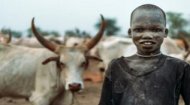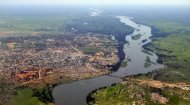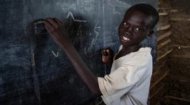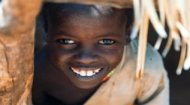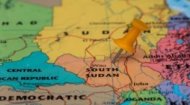|
This perceived subjugation ignited the First Sudanese Civil War (1955-1972), a conflict that claimed half a million lives but ultimately led to the Addis Ababa Agreement, granting the South significant autonomy. However, this peace proved fragile. In 1983, the agreement was abrogated, and Islamic Sharia law was re-imposed, sparking the Second Sudanese Civil War. This conflict, lasting for over two decades (1983-2005), was one of the most devastating in modern history, claiming an estimated 2 million lives, displacing over 4 million people, and leaving a generation traumatised. The war was fought primarily between the Sudan People's Liberation Army/Movement (SPLA/M) led by John Garang and the Khartoum government. International pressure, coupled with a military stalemate, eventually led to the Comprehensive Peace Agreement (CPA) in 2005. Under the CPA, a Governorate of Southern Sudan was established with an interim constitution for a six-year interim period, followed by a referendum on self-determination for the South.
South Sudan's economic profile is overwhelmingly dominated by oil. The country holds the third-largest oil reserves in Sub-Saharan Africa, and oil revenue constitutes over 90% of its government budget. This dependence, however, has proven to be a double-edged sword – a classic example of the "resource curse." While oil provides significant income, it has stifled diversification and fueled corruption and conflict. The infrastructure to extract and transport oil largely relies on Sudan, making South Sudan vulnerable to political tensions with its northern neighbour. Fluctuations in global oil prices also have a devastating impact on the national economy, leading to severe fiscal crises, inflation, and a depreciating currency. Beyond oil, South Sudan possesses vast potential for agriculture, with fertile lands capable of supporting a diverse range of crops and livestock. However, less than 5% of arable land is cultivated, primarily due to insecurity, lack of infrastructure (roads to markets, storage facilities), limited access to modern farming techniques, and persistent cycles of floods and droughts exacerbated by climate change. As a result, the majority of the population relies on subsistence farming, yet the country remains highly food-insecure, dependent on humanitarian aid. Other economic sectors, such as manufacturing, services, and tourism, are virtually non-existent or severely underdeveloped due to decades of conflict, lack of investment, a weak regulatory environment, and widespread insecurity. The informal sector, particularly cross-border trade, plays a vital role for many, but overall, the absence of a diversified economy leaves South Sudan extremely vulnerable and makes sustainable development a distant goal. The social landscape of South Sudan is characterised by immense ethnic diversity – over 60 distinct ethnic groups, speaking numerous languages – alongside deep-seated challenges in human development. The long years of conflict have left a devastating impact on public services, infrastructure, and human capital. Education is a critical area of concern. Decades of war destroyed schools, displaced teachers, and disrupted learning. More than 70% of children are out of school, one of the highest rates globally, with girls particularly disadvantaged due to cultural norms, early marriage, and insecurity. The adult literacy rate is among the lowest in the world. Access to healthcare is equally dire. South Sudan has some of the worst health indicators globally, including high maternal and infant mortality rates. Diseases like malaria, cholera, and kala-azar, which is fatal if left untreated in over 95% of cases, are endemic. Medical facilities are scarce, understaffed, and often lack basic supplies. Clean water and sanitation are luxuries for many, contributing to the spread of waterborne diseases. This profoundly impacts daily life, where preventable illnesses often turn fatal. |
South Sudan Profile |
South Sudan Profile |
South Sudan Profile | South Sudan Profile |
Take our online South Sudan trivia quiz and see how much you know about South Sudan with interesting facts.
More >
Read all the latest news and current events from South Sudan online at our Sudanese news page.
More >

For millions, daily life in South Sudan is a relentless struggle for survival. Over two million people are internally displaced, having fled their homes due to violence, and more than 2.3 million are refugees in neighbouring countries. Food insecurity affects two-thirds of the population, meaning millions face acute hunger. Families often walk miles to fetch water, children are denied the opportunity to learn, and the threat of violence or displacement looms constantly. Access to basic necessities like food, clean water, shelter, and security dictates the rhythm of existence. Despite these overwhelming adversities, the social fabric is underpinned by remarkable resilience, strong community bonds, and deep cultural heritage. Music, storytelling, traditional dances, and vibrant attire are integral to the identity of various ethnic groups, serving as powerful expressions of history, joy, and sorrow. The capacity of South Sudanese people to adapt, find solace in community, and rebuild amidst recurring crises is a testament to their enduring spirit. The challenges facing South Sudan are multi-faceted and deeply entrenched, making its path to stability and prosperity exceptionally difficult:
Addressing the humanitarian crisis, fostering national reconciliation, and supporting community-led peace initiatives are also critical steps. The resilience of the South Sudanese people, their deep desire for peace, and the potential of their rich natural resources offer a glimmer of hope. However, without sustained international support, committed national leadership, and a genuine shift towards peace and development, South Sudan will continue to navigate a difficult and uncertain path, forever shaped by its complex history and the profound challenges that continue to define the daily life of its people. Some South Sudan facts:
South Sudan is in joint bottom place with Somalia out of 193 countries and territories in 2023 when ranked in terms of life expectancy, literacy, access to knowledge and the living standards of a country and continues to grapple with sporadic violence, chronic food insecurity, and the devastating impact of major flooding. |

 On January 9, 2011, the people of South Sudan voted overwhelmingly – nearly 99% – for independence. The jubilation that accompanied the birth of the new nation on July 9, 2011, was palpable, carrying the weight of generations of struggle and sacrifice. Yet, the euphoria was short-lived. Just over two years later, in December 2013, a political power struggle between President Salva Kiir and his former Vice President Riek Machar escalated into a brutal and bloody internal conflict. This new civil war tore through the nascent nation, largely along ethnic lines (Dinka vs. Nuer), causing widespread destruction, massive displacement, a humanitarian catastrophe, and tens of thousands dead. Despite various peace agreements, including the Revitalized Agreement on the Resolution of the Conflict in South Sudan (R-ARCSS) signed in 2018, implementation has been slow, and violence continues in many areas, leaving the nation in a perpetual state of fragility.
On January 9, 2011, the people of South Sudan voted overwhelmingly – nearly 99% – for independence. The jubilation that accompanied the birth of the new nation on July 9, 2011, was palpable, carrying the weight of generations of struggle and sacrifice. Yet, the euphoria was short-lived. Just over two years later, in December 2013, a political power struggle between President Salva Kiir and his former Vice President Riek Machar escalated into a brutal and bloody internal conflict. This new civil war tore through the nascent nation, largely along ethnic lines (Dinka vs. Nuer), causing widespread destruction, massive displacement, a humanitarian catastrophe, and tens of thousands dead. Despite various peace agreements, including the Revitalized Agreement on the Resolution of the Conflict in South Sudan (R-ARCSS) signed in 2018, implementation has been slow, and violence continues in many areas, leaving the nation in a perpetual state of fragility.
